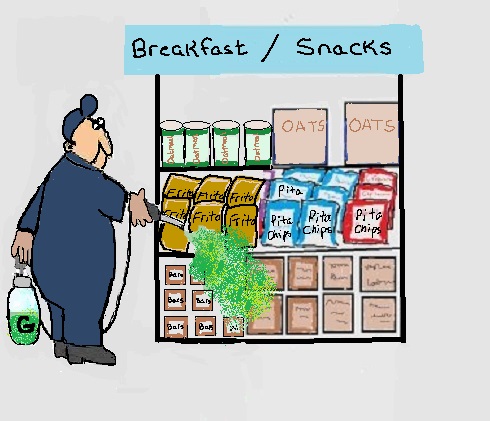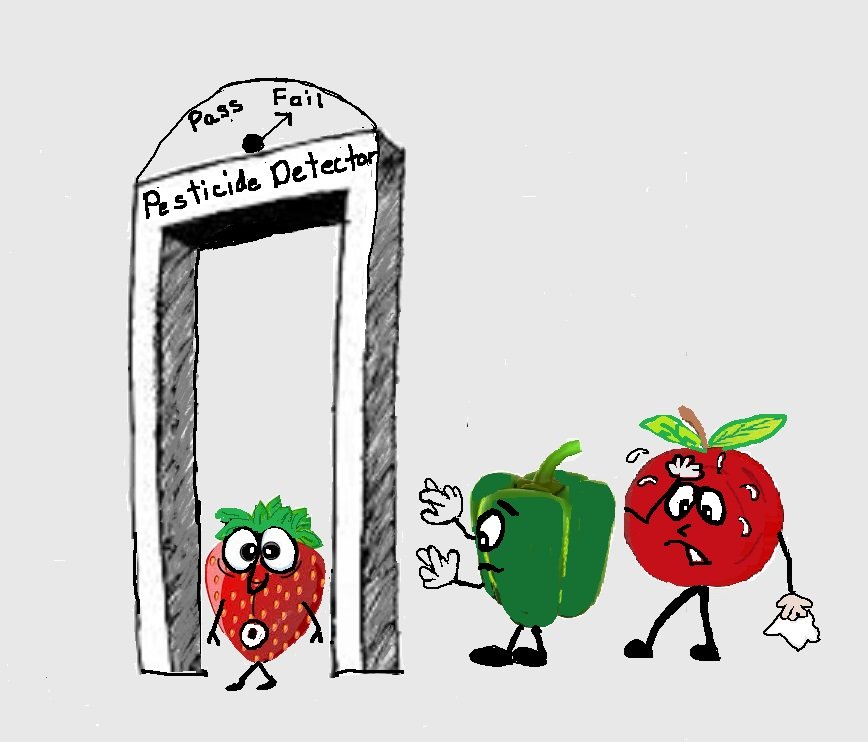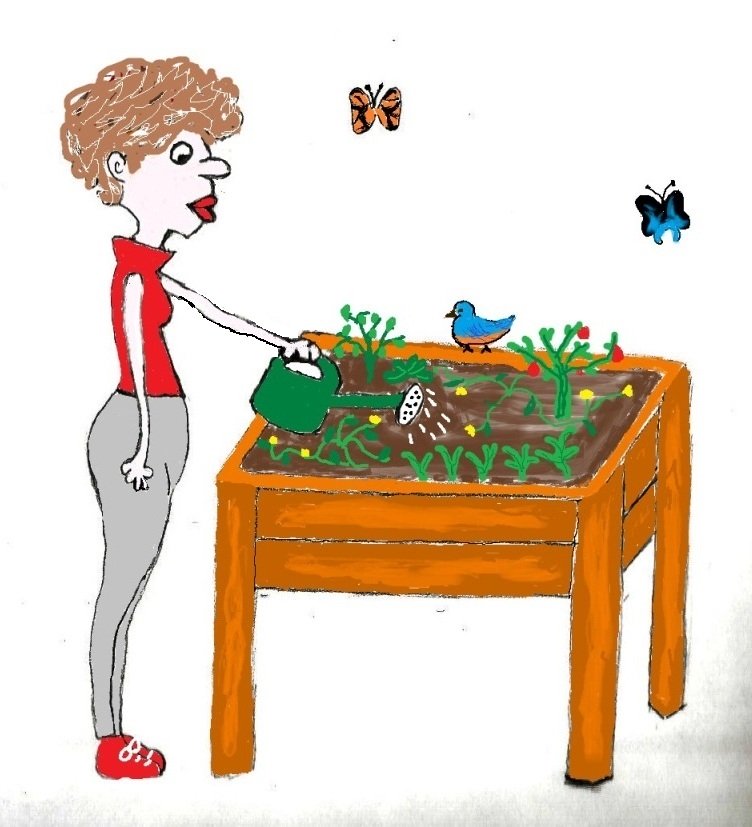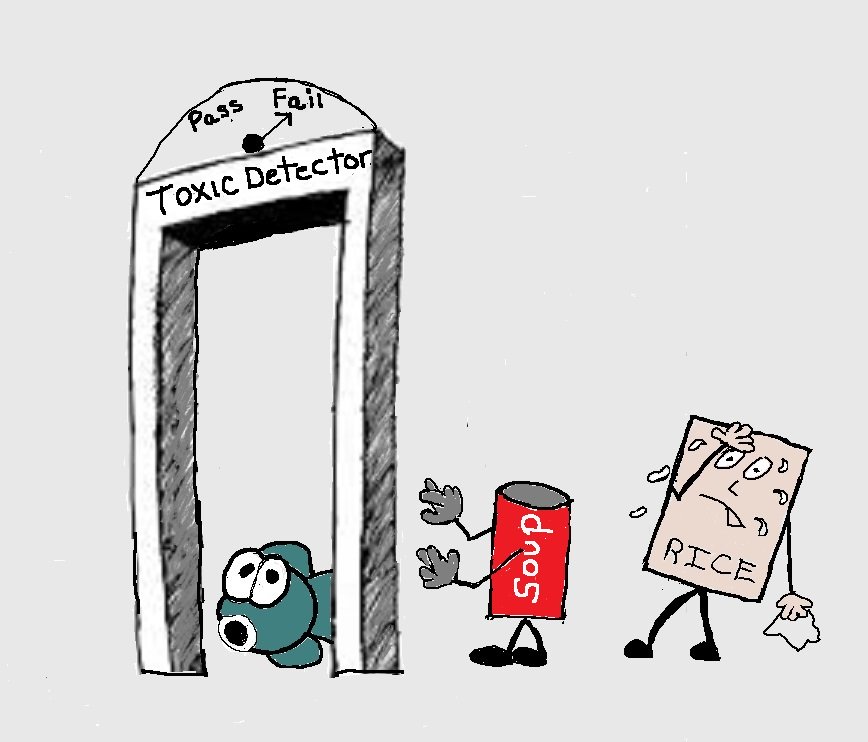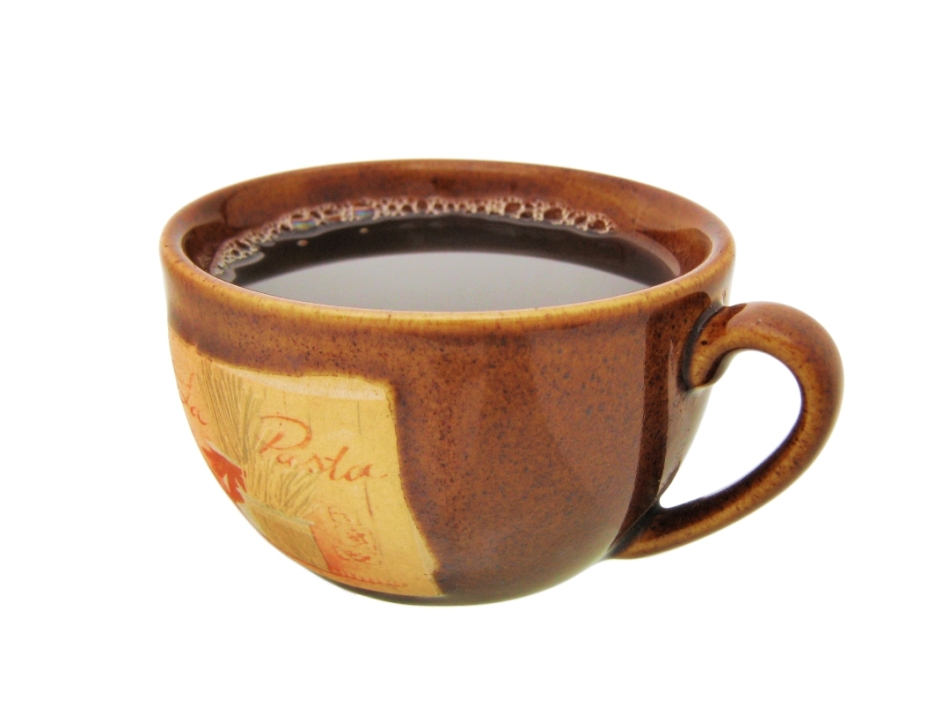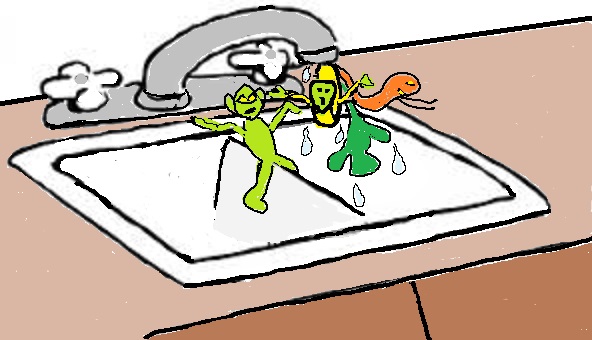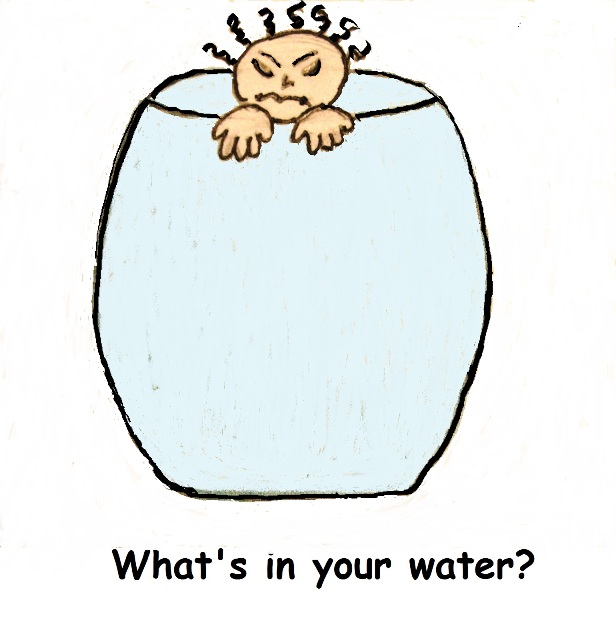- Home
- Non Toxic Food
Non Toxic Food - Cooking/Storing

Non Toxic food includes the switch to non toxic cookware and food storage and dietary changes. Why? Because food is a a major source of exposure to toxic chemicals.
What good is
eating a bowl full of steamed veggies if they are laden with pesticide
residues. And cooking healthy foods in nonstick cookware and plastic appliances
defeats the purpose of healthy eating.
To reduce this exposure you need to be aware that the toxic chemicals in your food come from a variety of sources. These include:
- The pesticides used to grow your food
- Toxic chemicals stored in fatty animal products
- Contaminants from growing processing and cooking food
- Food packaging and storage containers
- The type of pots and pans you use
- The nonstick and plastic components in small appliances
- Chemical contaminants in Tap water
Eat More Organic Food
Eating nontoxic foods does require making some changes in your diet. Non toxic eating includes lots of organic fruits and vegetables to reduce exposure to pesticide residues.
If you’re new to organic foods, start with what the Environmental Working Group refers to as the “Dirty Dozen”. Fruits and vegetables make this list because of the high number of pesticides found on them.
The Environmental Working Group uses the USDA and FDA pesticide residue reports to compile their list of the fruits and vegetables that have the most pesticide residues.
The current list of the top 12 are - strawberries, spinach, greeens (kale, collared and mustard), peaches, pears, nectarienes, apples, grapes, bell & hot peppers, cherries, blueberries and green beans.
You don't need to go organic with items on the Clean 15 list. They have the least amount of pesticide residues. The list includes avocados, sweet corn, pineapple, onions, papaya, asparagus, honeydes, kiwi and cabbage.
For more non toxic solutions to reduce
your exposure to pesticides check out these articles.
Eat Cleaner Food
Another non toxic dietary change is to avoid toxic chemicals intentionally added to the food you eat, like preservatives and dyes, or chemicals from contaminants in soil and water, like arsenic in rice and mercury in fish.
Rice, especially brown rice usually contains high amounts of arsenic because it easily absorbs it from the water-logged soil it’s grown in. Brown rice in my opinion is not a non toxic food.
This arsenic found in rice is classified as a Group 1 carcinogen, and is known to cause skin liver, kidney, and bladder cancer.
Researchers have also found that it affects your gut health. Because when you ingest arsenic it harms your gut bacteria by killing off some of the good bacteria and increasing the bad.
Besides rice, brown rice syrup, rice milk and rice pasta are sources of exposure. These products are often labeled as gluten free.
I've found that a great non toxic food alternative to rice is farro. When cooked, it has a texture very similar to rice.
Another non toxic dietary change is reducing the amount of animals in the form of meat and dairy, that you eat. These fatty foods store toxic chemicals known as Persistent Organic Pollutants (POPs).
This name comes from the fact that these types of chemicals resist being broken down, either in your body or the environment. When you eat animals, the POPs in their body fat become your POPs.
So to reduce POP exposure:
- Cut back on dairy consumption and replace full fat dairy with low fat options.
- Eat less red meat. Add leaner sources of protein and beans to your diet.
- Eat lower on the food chain by consuming more plant-based foods.
- Eat fish that are lower on the marine food chains. Avoid large, predatory fish
like sharks and swordfish and long-lived fish like albacore tuna.
An important way to reduce your exposure to carcinogens in food is to cut waay back on the processed meats you eat. Yes, things like bacon and lunch meats are know to cause cancer. Just get them out of your diet.
For more info on Non Toxic Food check out the following posts.
Avoid Toxic Chemicals in Food Packaging
Next time you’re at the grocery store consider how the food you’re buying is packaged. Some packaging can transfer toxins into our food. Can linings, plastic food containers and stain resistant packaging are all sources of toxins.
Two key ways to make the switch to non toxic food packaging are:
Cut Back on Canned
Foods
WHY - The epoxy lining in those cans is made with BPA. And BPA easily leaches from this lining into your food, especially when the foods are acidic.
Even if some of your cans are labeled BPA free, they may not be any safer. Many BPA substitutes are found to be just as toxic as the original
Take Action – Start the process of eliminating canned foods from your diet. This requires some effort and commitment because canned foods are so convenient.
Start with the worst offenders. Tomato-based products should the first to go. The acidity in tomatoes causes high levels of BPA and BPA substitutes to leach from can liners. Buy soups and tomatoes packed in glass jars or waxed cardboard (Tetra-Paks).
Think Glass Instead of Plastic
WHY - Condiments, salad dressings and nut butters are often packaged in plastic. These containers leach plastic chemicals into your food, contaminating it with carcinogens like Antimony and BHA/BHT and endocrine disruptors like Phthalates and BPA.
Take Action – Switch to foods packaged in glass whenever possible. Next time you’re at the grocery store and reach for a jar of mustard go for the glass options.
Non Toxic Cookware And Applainces
Non toxic cooking is about the cookware you use to prepare your food to reduce your toxin exposure.
First - Get rid of your NONSTICK COOKWARE, INCLUDING POTS, PANS AND BAKEWARE.
Switch to
1. Stainless Steel
Stainless steel cookware is a great alternative to non-stick. It browns food better, heats evenly and lasts a lifetime. You do have to use a little bit of oil and clean-up is not always a breeze. Try an oil spray bottle to coat your pan and simmer a little water in your pans after using them to loosen food stuck to the pans. I don’t enjoy cleaning baked-on food off my bakeware. My trick to making any bakeware nonstick is to line it with unbleached parchment paper or use baker’s goop. My recipe is 1 part flour, 1 part solid oil like coconut, or I use Ghee, and 1 part liquid oil.
2. Glass and Ceramic Glass and ceramic stoneware (like Corning) are good nontoxic baking options. Pyrex is a versatile choice because you can bake, store and freeze in the same container. I’ve used Pyrex for years with no problems, but I have heard reports that it can explode after it is removed from the oven. This can be avoided by placing the hot Pyrex on a potholder. You can also use glass cookware made from borosilicate glass, which will not shatter.
I don’t like the plastic lids that come with Pyrex and Corning though. I only use them for storing. I NEVER use them in the microwave or place them on my containers when the food inside is hot.
3. Cast Iron
Cast iron cookware is a tried and true solution with a long history. It is very durable and can be used in the oven. On the downside, cast iron is a bit heavy and you do have to season the pans. But once they are well-seasoned, cleaning them is very easy. I have several cast iron pans, including an omelet pan that I couldn’t do without. Be aware that there is some concern about iron leaching from cast iron that isn’t well-seasoned.
While the selection is a bit limited there are non toxic solutions for steamers, coffee makers, toaster ovens and electric grills.
Non Toxic Food Storage Containers
If you’re going to go to all the trouble to prepare healthy, organic meals in non toxic cookware, don’t blow your efforts by storing your leftovers in plastic.
Food storage containers are made from polycarbonate and polycarbonate replacement plastics (aka BPA-free). Plastic wraps and bags are made from either polyvinyl chloride (#3 PVC) or low density polyethylene (LDPE, #4).
Avoiding BPA is not as simple as buying plastic labeled BPA Free. Studies have shown that plastic food storage containers, bags and wraps, even those considered BPA-free, release synthetic estrogen that can disrupt your endocrine system.
BPA free means the plastic containers were made without the chemical BPA. And there are lots of companies now making BPA Free plastic bottles and food containers.
But when BPA is removed from the manufacture of plastics it's easiest and cheapest for companies to replace it with something chemically similar. In BPA free products, BPA was substituted with chemicals like BPF, BPS, BPAP, BPB, BPE, BPP and PVC.
Because these BPA substitutes are so similar to BPA, multiple studies have found they are as bad or worse for you than BPA.
For example, a study published in 2017 tested 6 BPA alternatives and found that all six of the substitutes mimicked estrogen and promoted breast cancer cell growth more than BPA. And three of the substitutes—bisphenol AF (BPAF), bisphenol B (BPB), and bisphenol Z (BPZ)—were more potent than BPA at mimicking estrogen.
In other words, BPA Free food storage containers made of plastic are just as toxic as plastic containers with BPA. Stainless steel and glass containers and cloth bags are great non toxic food storage options.
If you choose to go with glass containers with plastic lids don't use the lid in the microwave. And reduce food contact with the lids, especially when the food is hot. (Heat increases the amount of toxic chemicals that leach from plastic).
The best non toxic food storage containers are also plastic free. Stainless steel containers with stainless steel or bamboo lids and glass containers with bamboo lids are the best options available.
Glass options are the most versatile because they are freezer, microwave and oven safe. But if you choose metal my trick is to pair stainless steel food storage containers with the HotLogic Warming Tote for hot meals. You can also use glass containers in this tote.
For some great nontoxic food storage containers click here.
Toxic Chemicals in Tap Water
Don't forget about the toxic chemicals that can be in your tap water. You drink the same water every day so it's important to reduce this source of toxic chemical exposure.
To make the switch to non toxic drinking water get the best water filter you can find and use it consistently. And use the same criteria to store water as you use for food.
Glass and stainless steel are the safest bets. For more info on cleaning up your water check out these articles.
